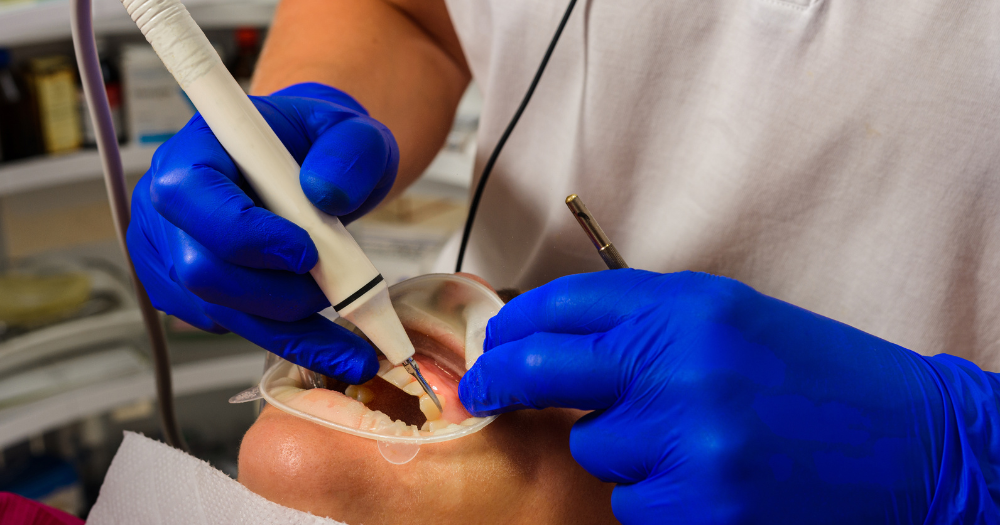Tartar buildup is a common yet preventable issue that many people face. It starts as plaque, the sticky film of bacteria that forms on teeth throughout the day. When not effectively removed by regular brushing and flossing, plaque hardens into tartar, which can only be professionally removed by a dentist. One of the most frequent concerns people have about tartar removal is whether the procedure is painful. If you’ve found yourself wondering “Is tartar removal painful?”, this guide will provide you with a detailed and informative answer.
What is Tartar, and Why Is It Important to Remove It?
To understand tartar removal, we first need to explain what tartar is and why it’s essential to remove it.
Tartar, or dental calculus, forms when plaque, which is a soft film of bacteria, isn’t removed properly and hardens over time. The minerals from saliva contribute to plaque’s transformation into tartar, which attaches itself firmly to the surface of your teeth and gums. Over time, tartar can cause gum irritation, tooth decay, and even gum disease, which can lead to tooth loss if untreated.
Regular cleaning by a dental professional is the only effective way to remove tartar. Since tartar can’t be removed with regular brushing, it’s crucial to schedule regular dental visits to avoid dental problems in the future.
The Tartar Removal Process: What to Expect
Tartar removal is usually part of a routine dental cleaning. If you’re concerned about the process, here’s a step-by-step breakdown of what happens during a dental cleaning session:
- Initial Examination: Before proceeding with tartar removal, your dentist or dental hygienist will first assess the condition of your teeth. They may take X-rays to check for any hidden dental issues like cavities or tooth decay.
- Scaling: The scaling process involves using specialized tools to remove tartar from the surface of your teeth. A dental professional uses an ultrasonic scaler or manual tools to break up the tartar. The ultrasonic scaler emits vibrations that help loosen and remove tartar more efficiently.
- Polishing: After tartar is removed, your teeth will be polished. This not only smooths the surfaces of your teeth but also helps remove any remaining plaque and minor surface stains. Polishing leaves your teeth feeling fresh and looking brighter.
- Fluoride Treatment: After the cleaning, a fluoride treatment may be applied to strengthen your teeth and provide additional protection against cavities and plaque buildup in the future.
Is Tartar Removal Painful?
One of the most common questions people have is, “Does tartar removal hurt?” In general, tartar removal is not typically painful, but there are several factors that can influence the level of discomfort during the procedure. Here’s what you need to know:
1. Extent of Tartar Buildup
The amount of tartar on your teeth plays a significant role in how the procedure feels. If you’ve neglected your dental hygiene and have a considerable amount of tartar buildup, the scaling process might take longer and may feel slightly uncomfortable. This is because the tartar has firmly adhered to your teeth and gums, requiring more effort to remove.
2. Sensitivity of Your Teeth and Gums
If you have sensitive teeth or gums, you may experience mild discomfort when the dentist is scaling close to the gums or along the tooth’s surface. Teeth with exposed roots are especially prone to sensitivity. However, most professional dental offices are well-equipped to minimize discomfort. A good dentist will ensure your comfort throughout the procedure.
3. Your Pain Threshold
Everyone’s pain tolerance is different. Some people might find the cleaning process completely painless, while others may feel a bit of discomfort. This is a normal part of the process and is generally short-lived. After the cleaning is done, most people feel significantly better, and any discomfort usually subsides within a few hours.
4. Type of Tools Used
Dentists typically use ultrasonic scalers or manual tools to remove tartar. Ultrasonic tools are gentle and efficient, using vibrations to break up the tartar, often making the process quicker and less uncomfortable. Manual scaling tools, on the other hand, may apply more direct pressure on the teeth and gums, which could lead to slight discomfort if there is significant tartar buildup.
5. Anesthesia Options
If you’re particularly anxious or worried about pain, you can talk to your dentist about numbing options. For patients with severe tartar buildup or high sensitivity, local anesthesia may be used to numb the area being worked on, ensuring a pain-free experience.
Post-Tartar Removal:
After your tartar is removed, you might experience mild gum sensitivity and teeth sensitivity, especially if you had a lot of tartar removed. This discomfort is usually temporary and should subside within a day or two.
If your gums were irritated during the cleaning, they might feel a little tender. It’s also normal to notice that your teeth feel smoother, as the removal of tartar eliminates the rough surface that tartar can create. Polishing your teeth afterward helps to remove any leftover plaque and surface stains, leaving your teeth feeling fresh and clean.
Aftercare Tips:
- Avoid hot, cold, or acidic foods and drinks for a few hours after your cleaning if you experience sensitivity.
- Use toothpaste for sensitive teeth to reduce discomfort.
- Continue brushing and flossing regularly to keep plaque and tartar from building up again.
How Often Should You Get Tartar Removed?
The frequency of tartar removal depends on your individual dental health needs. In general, most people should have a professional cleaning every six months. However, if you’re prone to tartar buildup, your dentist may recommend more frequent cleanings.
Regular cleanings not only remove tartar but also help in the early detection of other dental issues such as cavities or gum disease. If you’re asking, “Where can I find dental cleaning near me?” or “What is the best dentist near me?”, make sure you schedule regular checkups to maintain optimal oral health.
Finding the Right Dentist for Tartar Removal
When looking for a dentist, it’s essential to choose someone you feel comfortable with. If you’re searching for a dentist in Satellite, best dentist near me, or teeth cleaning near me, keep the following points in mind:
- Experience: Look for a dentist with a strong track record in preventive care and patient satisfaction. Check online reviews or ask for recommendations.
- Comfort: A good dentist will make sure you are comfortable and informed throughout the procedure. If you’re nervous, don’t hesitate to discuss your concerns with the dentist beforehand.
- Convenience: Finding a local dentist who offers flexible scheduling and is close to your location makes it easier to maintain regular dental visits.
Conclusion
Tartar removal is a vital aspect of dental care, but it’s not something to fear. While the process itself is generally not painful, a small amount of discomfort is possible depending on your specific situation. The benefits of tartar removal far outweigh any temporary discomfort, as it helps maintain the health of your teeth and gums, preventing more serious dental issues down the line.
If you’re searching for a dentist in Satellite, dental cleaning near me, or best dentist near me, it’s essential to find a professional who can make your tartar removal experience as comfortable as possible. Regular dental checkups and cleanings are essential for good oral health, so don’t put off your next appointment. Keep up with your at-home oral hygiene routine, and trust your dentist to help you maintain a healthy, beautiful smile!



